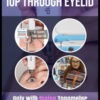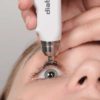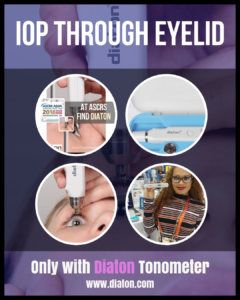Clinical Study Shows Diaton Tonometer Measures More Accurate Cornea Independent IOP Post LASIK
Comparison of Intraocular Pressure before and after Laser In Situ Keratomileusis Refractive Surgery Measured with Perkins Tonometry, Noncontact Tonometry, and Transpalpebral Tonometry. J Ophthalmol. 2015;2015:683895. doi: 10.1155/2015/683895. Epub 2015 Jun 8.
http://www.ncbi.nlm.nih.gov/pubmed/26167293

Abstract
Purpose. To compare the intraocular pressure (IOP) before and after Laser In Situ Keratomileusis (LASIK), measured by Diaton, Perkins, and noncontact air pulse tonometers. Methods. Fifty-seven patients with a mean age of 34.88 were scheduled for myopia LASIK treatment. Spherical equivalent refraction (SER), corneal curvature (K), and central corneal thickness (CCT) and superior corneal thickness (SCT) were obtained before and after LASIK surgery. IOP values before and after surgery were measured using Diaton, Perkins, and noncontact air pulse tonometers. Results. The IOP values before and after LASIK surgery using Perkins tonometer and air tonometers were statistically significant (p < 0.05). However, no significant differences were found (p > 0.05) for IOP values measured with Diaton tonometer. CCT decreases significantly after surgery (p < 0.05) but no statistical differences were found in SCT (p = 0.08). Correlations between pre- and postsurgery were found for all tonometers used, with p = 0.001 and r = 0.434 for the air pulse tonometer, p = 0.008 and r = 0.355 for Perkins, and p < 0.001 and r = 0.637 for Diaton. Conclusion. Transpalpebral tonometry may be useful for measuring postsurgery IOP after myopic LASIK ablation because this technique is not influenced by the treatment. #tonometer #tonometry







